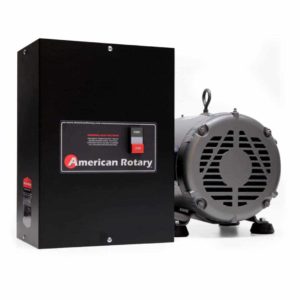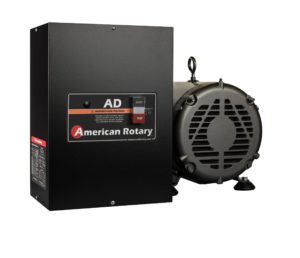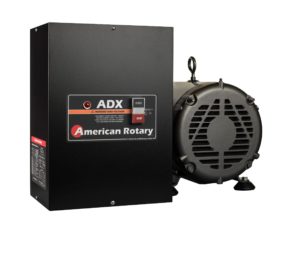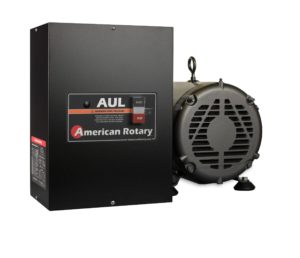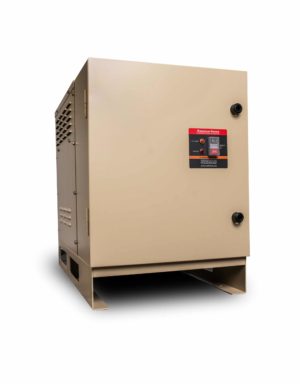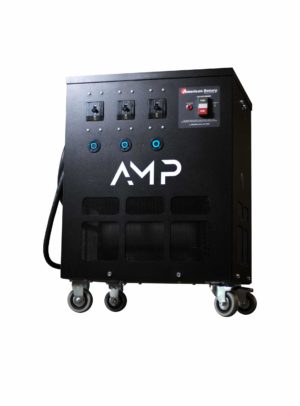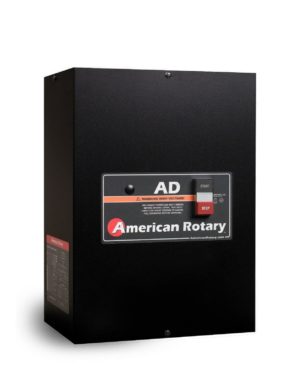Single-Phase to Three-Phase Converter
We designed and built American Rotary’s high-quality, USA-made single-phase to three-phase converters to provide continuous, balanced power for a range of applications.
Whether you need three-phase power for your home workshop or working in a large industrial setting, we’re sure that one of our converters will meet your needs.
- $628.00 – $4,150.00
- $810.00 – $8,299.00
- $810.00 – $8,299.00
- $910.00 – $44,232.00
- $1,010.00 – $44,632.00
- $3,899.00 – $48,932.00
- $1,169.35 – $2,209.35
- $290.00 – $830.00
How Single-Phase to Three-Phase Converters Work
Most electrical utility companies only supply single-phase power to homes and light commercial properties, which poses a problem if you have equipment that relies on three-phase power to get the job done.
You only have a few options when you only have access to a single-phase line. In some cases, you can pay the electric company for a new three-phase line. Most utility companies will not run three-phase power to residential areas and, if they will, the national average price to run the new line is $50,000 per mile.
For most people, buying a phase converter to convert their existing single-phase source into three-phase power is a better solution. A single-phase to three-phase converter is a more cost-effective option that provides the same benefits as long as you buy one in the right size to fit your equipment’s needs
Phase converters of all types use an induction motor or an idler/generator to add an additional line of voltage, converting single-phase power into three-phase and allowing you to operate your three-phase equipment safely.
To learn more, read our guide on how phase converters work.
Do You Need a Static or Rotary Phase Converter?
While all phase converter types can start a three-phase load, not all can sustain it.
A static phase converter can start a load under three-phase power by using capacitors to start its motor. Once the equipment being powered gets started under the three-phase load, the static converter runs the equipment on a lower-power single-phase load.
This means a static converter can only operate three-phase equipment at about 2/3rds of its rated capacity. For this reason, static converters are only suited for light-duty equipment. Because of these limitations, a static converter can only run one piece of equipment at a time, and you risk overheating or damaging that equipment.
A rotary phase converter, on the other hand, uses an idler/generator motor to provide continuous three-phase power to your equipment. It starts the equipment under three-phase power and continues to supply it until the job is done.
Rotary phase converters supply precisely balanced three-phase power and, depending on the size of the machine, can power more than one piece of equipment at a time.
To learn more about these options, check out our guide on static versus rotary converters.
Is a Phase Converter the Same as a VFD?
No. While variable frequency drives (VFDs) and phase converters are both used to supply precise power to machines, these two devices have different purposes.
VFDs are precisely matched to a single machine so that the power being supplied is always at the right frequency and voltage for optimal efficiency. But most VFDs are limited to 3 HP loads. These are ideal for providing power to a single device that is in frequent use.
A rotary phase converter provides the same balanced power but can do so for a variety of machines at once. These devices are not hardwired into your equipment, so you can swap devices in and out as needed. Phase converters also come in higher-capacity models, allowing you to power more heavy-duty machinery when the job calls for it.
To learn more, check out our guide comparing VFDs and phase converters. If a VFD is more suited to your needs, American Rotary has a full line of high-quality VFD options to choose from.



